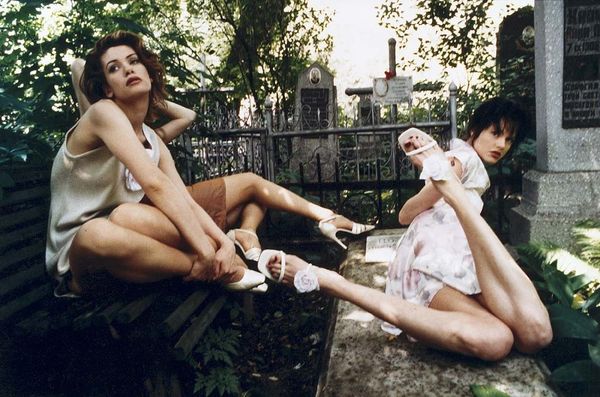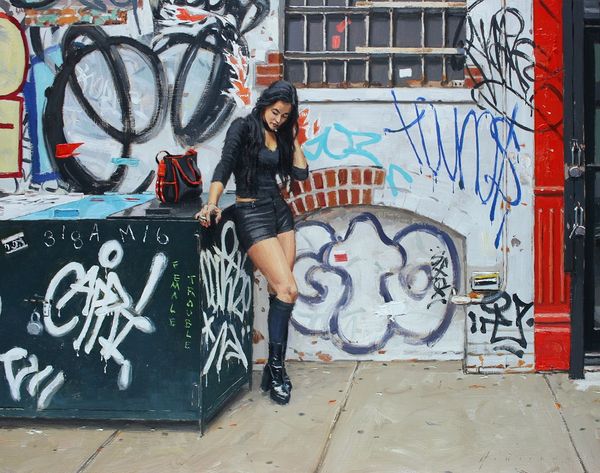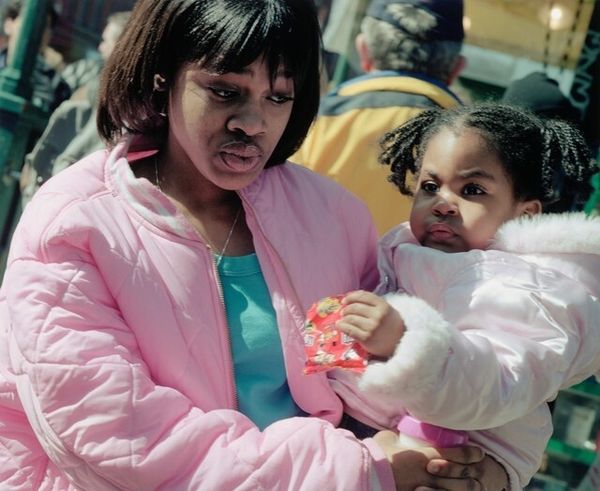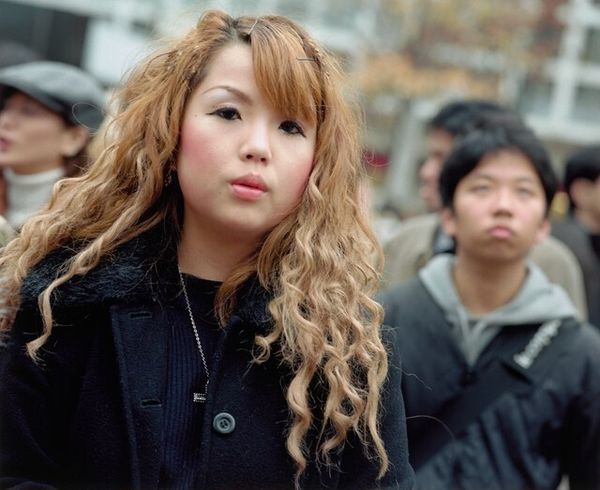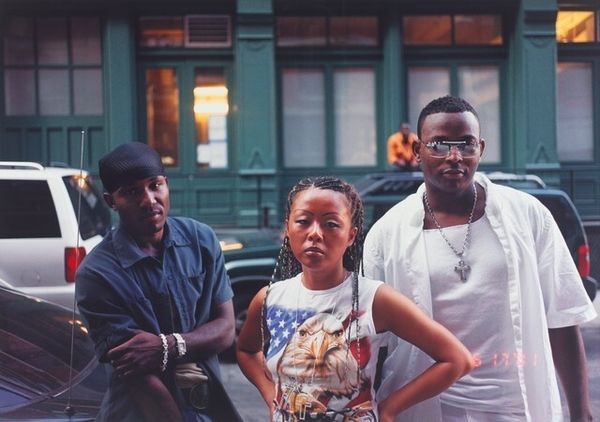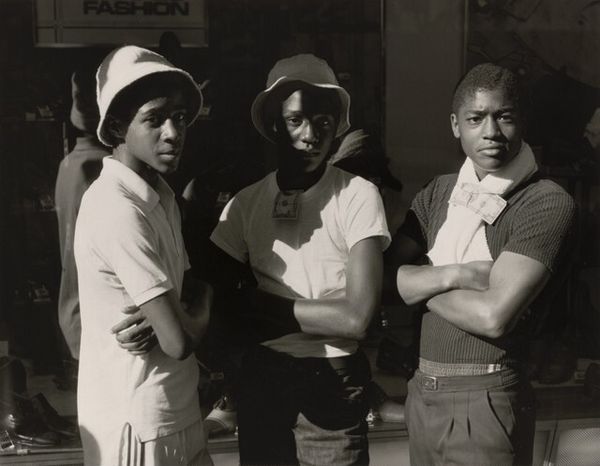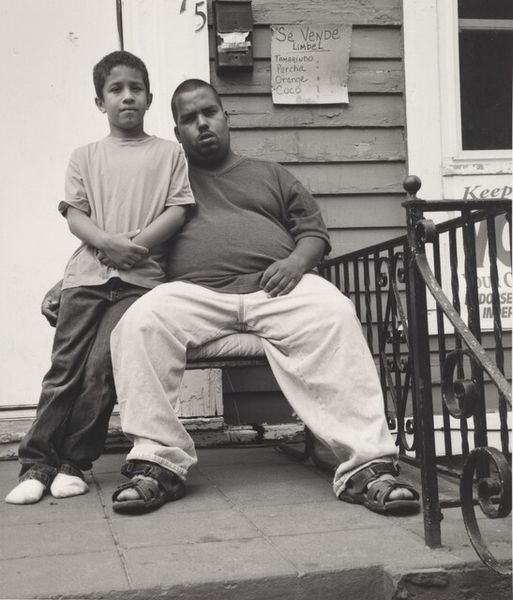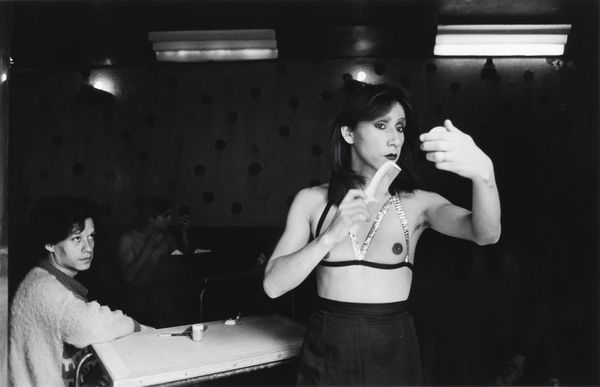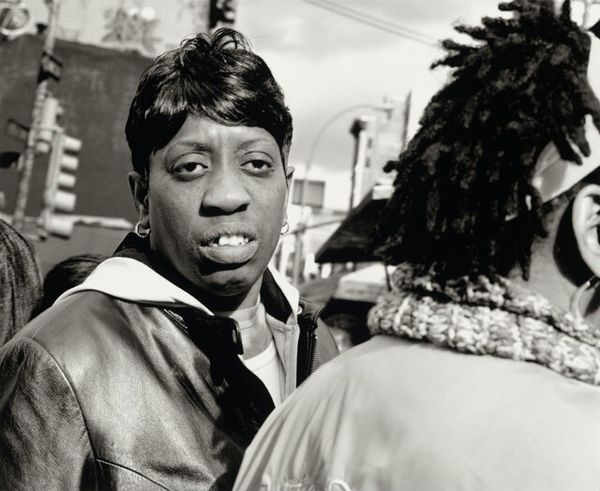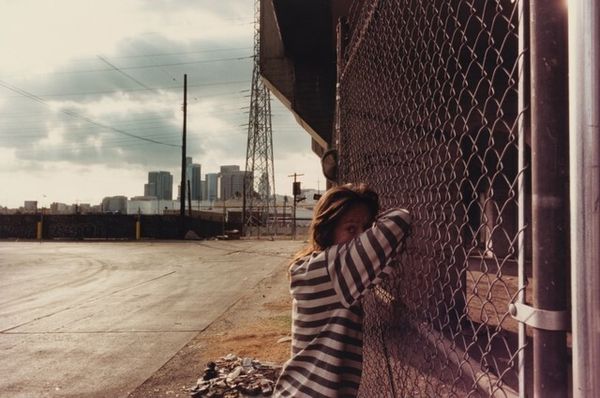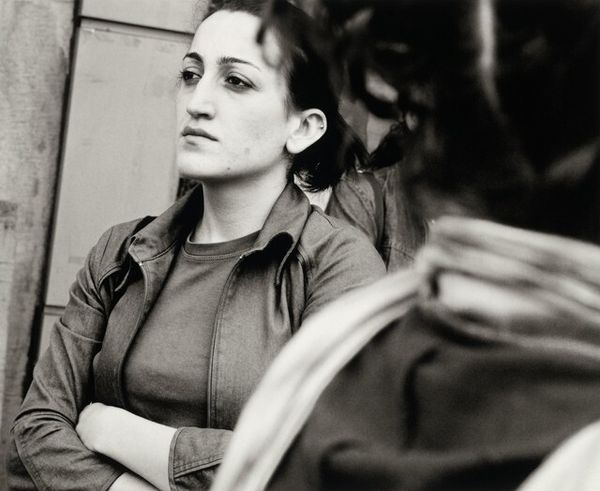
c-print, photography
#
portrait
#
contemporary
#
conceptual-art
#
c-print
#
street-photography
#
photography
Dimensions: image: 60.64 x 86.36 cm (23 7/8 x 34 in.) sheet: 76.2 x 101.6 cm (30 x 40 in.)
Copyright: National Gallery of Art: CC0 1.0
Curator: Let’s turn our attention to Nikki S. Lee's "The Hispanic Project (2)" from 1998, a C-print photograph that's part of a larger body of work where she immersed herself in different subcultures. Editor: It’s got a wonderfully spontaneous energy, like a snapshot plucked right from the late 90s. The photograph looks like it depicts a summer day in a park with skyscrapers towering in the background. But this isn’t just street photography is it? Curator: Precisely, the image's artifice becomes apparent upon closer examination, that the artist has inserted herself into a carefully constructed performance of ethnicity, class, and style. We have to acknowledge this photographic series as an art piece and examine her goals and artistic methods. Editor: The two young women front and center have adopted what could stereotypically be construed as 90s-era hip-hop signifiers, specifically with their Tommy Hilfiger crop top and urban styling, presenting themselves to the lens. And the gaze… it’s confident, confrontational even. What did Lee hope to symbolize in such projects? Curator: She’s challenging our assumptions about identity as something fixed. She explores how we perform identity, adopting the sartorial and social cues of different groups. Lee's performances invite a critical look at identity politics, immigration, and social integration in 1990s urban America. Editor: Those Hilfiger logos and urban accessories scream aspiration, visibility, a desire to assert oneself within a complex social landscape. The logo itself is so laden with its own baggage! And the people crowded around the women amplify the sense of performance and identity. But what's real, and what’s fabricated? Curator: That tension is what makes Lee’s work so compelling. Her “projects” are a critical commentary on how identities are packaged and consumed, not only by the individuals performing them, but also by the dominant culture that watches and judges. Lee’s work questions the relationship between image and reality and examines identity not as something one *is* but as something one *does*. Editor: The photo functions almost like a modern-day “vanitas” still life—reminding us that identities are provisional, shaped by trends, choices, and social scripts, even performance. Seeing through that adds so much to its viewing. Curator: Absolutely. It serves as a powerful document and a prompt for reflection about identity, representation, and belonging in contemporary society. It’s also worth thinking about this piece within a museum setting – it's fascinating how a performance of "authenticity" can gain value, and a new kind of meaning, through institutional validation. Editor: I think I'll carry that layered reading with me from now on, considering not just the subject, but the context and our act of viewing itself.
Comments
No comments
Be the first to comment and join the conversation on the ultimate creative platform.
